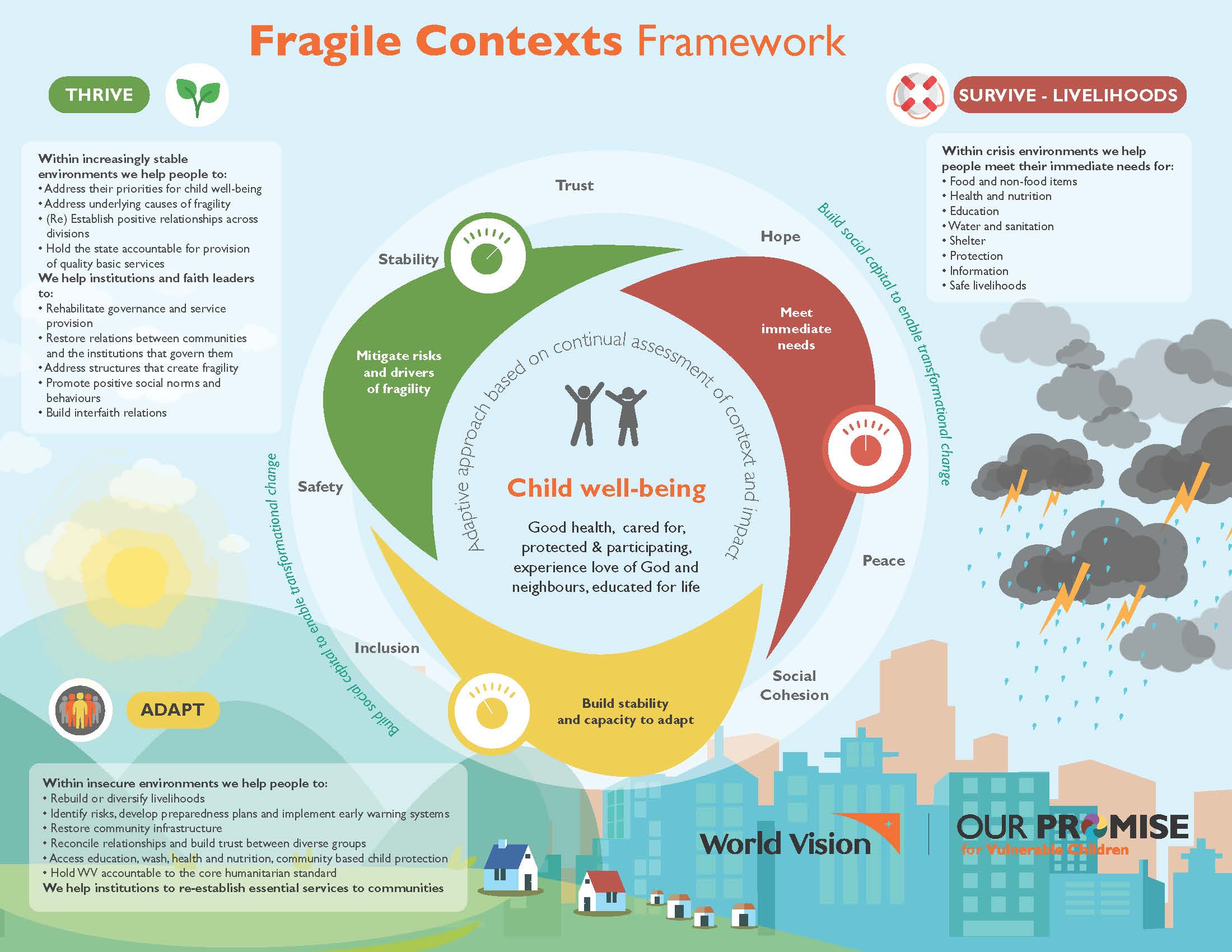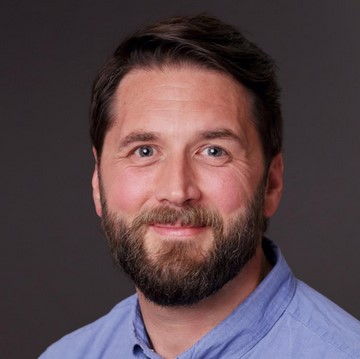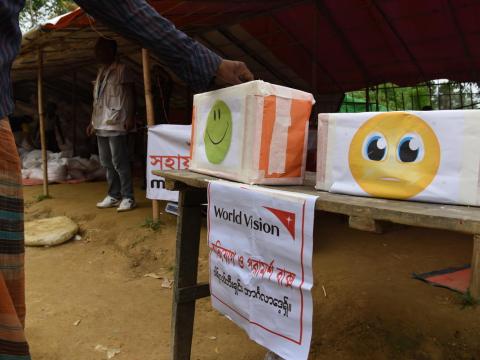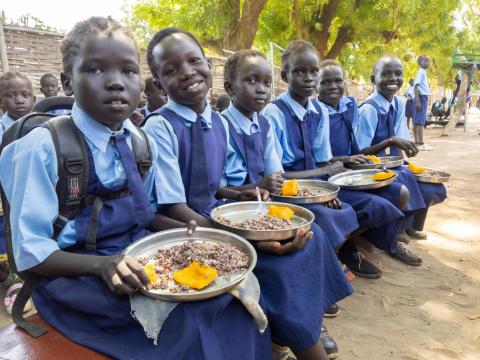What do you do when it all turns to mud?
By Maurice Sadlier
One, Two, Three PUSH
I think it’s moving, PUSH!
It definitely moved that time.
I think it did, a centimetre at least!
It is often said that a small group of committed people can achieve great things. But standing on a remote airstrip in Renk, South Sudan, in the searing sun, it didn’t seem like pushing a 5,000KG twin-engine fixed-wing aircraft out of the mud was one of those things.
Many of us will know some version of the words taken from the Robert Burns poem To a Mouse: “The best laid schemes o’ Mice an’ Men Gang aft agley/go often awry” and as humanitarian and development workers we are well used to our plans changing. Punctures, Land Cruisers stuck in the mud, food and vital items delivered late, livestock getting disease, meetings postponed, changing weather patterns, pandemics, the list goes on – all require us to readjust our personal and project plans, often at great speed. We have to be good at assessing the situation, adapting and replanning.
An aeroplane stuck in the mud was a new one for me! As I engaged in the futile effort of trying to free it, I was scenario planning in my head:
- We’ll never get this plane out of the mud and we’ll be here in Renk for a few days – I need to cancel onward plans for Juba and indeed Tanzania. But we’ll survive!
- We’ll get it out before too long and I’ll get to Juba tonight, I’ll have to cancel my meetings there but at least I’ll continue with Tanzania plans. We’ll adapt!
- The plane is moving, we’re winning the situation is improving great things are looking up. We’ll thrive!
Ironically, the reason I was in Renk was to visit the Fragile Context Programming Approach (FCPA) project World Vision runs, supported by the Irish and Korean offices. It’s ironic because at the heart of our fragile contexts work is scenario planning – something I had clearly failed to do enough, in advance of my trip!
As humanitarians we spend a lot of time talking about “The Nexus” – sometimes just the humanitarian/development nexus or sometimes the humanitarian/development/peacebuilding nexus – where the different ways of addressing the vital needs of vulnerable children and their families intersect and overlap. In the past, and honestly in the present, organisations like World Vision use different project models, different funding, aim for different goals, depending on the stability of the context. What works to tackle extreme poverty in Armenia won’t work to address chronic malnutrition in South Sudan, and what works to overcome child marriage in one part of Afghanistan won’t necessarily work in post-conflict Mozambique. But years of using different approaches has contributed to, in some cases, silo’d thinking, disjointed funding and separate approaches to improving lives for vulnerable children.
Our relatively new framework builds on our years of experience working in different contexts, and is a brilliant lens through which we can address children’s needs “across the nexus” in a holistic manner and take us out of our silos.
Adaptability and context monitoring are central to this work, so is the agility to integrate and shift from meeting immediate humanitarian needs to addressing root causes of poverty to transform communities. The design of any project is based on detailed scenario planning. Together with community leaders, we ask all kinds of questions. Who is in charge in this area, what impact would a major cyclone have on the supply to food, who is responsible for maintaining or disrupting peace, why can’t medicines get through, what are the weather patterns, what we people’s attitudes towards to violence against children? Through context analysis, needs assessment and a deep analysis of the root causes of fragility, we map out three scenarios for a project, allowing it to adapt to a predicated scenario should identified triggers or shocks become a reality.
At the heart of this approach are three dials: Survive, Adapt, Thrive. The dials are an agile planning device which helps programme designers to think in advance about a multitude of programming options that ensure relevance in any context.

We dial up or down various interventions and approaches, in response to analysis and regular context monitoring. For example, we turn up the “survive” dial – which might involve food programming, shelter, child protection – when the situation is violent and volatile, or in the immediate aftermath of disasters. As the situation improves, we dial down survive and turn up the “adapt” dial where activities are focused on rehabilitation, social cohesion, recovery from trauma, access to basic services, and re-establishing livelihoods, with a focus on building back better.
In the space of a few weeks last year, the world had to adapt to a new and fast-changing reality. COVID-19 has emphasised the importance – and challenge – of being adaptable, of monitoring contexts and changing direction swiftly when required. So much of this requires planning in advance, which is why I am so passionate about our Fragile Contexts Planning Approach – it demands we do this.
If I had applied the FCPA mindset to my own plans I would not have been making up my scenarios with me shoulder to the plane. I would have been switching the dials – adapting by having virtual meetings rather than having to be on a plane with such a tight turnaround, bringing extra food in case we had to sleep on the airstrip rather than the inadequate supplies I had with me - based on the potential scenarios for that context at that time!
In December last year I found myself back with the team in South Sudan, unfortunately due to COVID-19 this had to be an online get together. Along with colleagues from various part of the organisation we came together for the first ever Fragile Context Program Approach virtual design workshop. It was also the first opportunity to apply our FCPA framework to a grant-funded programme, and it was exciting to apply our learnings from across the organisation and build the scenarios and context-monitoring indicators for our Irish Aid-funded education and child protection project in Melut. I am looking forward to the next two years and sharing our learning, success and challenges of our adaptive programming in one of the world’s most fragile contexts.
And in case you are wondering we finally did get the plane out of the mud – after 6 hours of pushing and digging a truck was found and an hour later the plane was free. Unfortunately, too late for security clearance to fly that day, so ensued a scramble back to town to secure a bed and internet to cancel those meetings and replan. Where sometimes, planes get stuck in the mud, and we just have to find ways to adapt.
Maurice Sadlier is World Vision Ireland’s Programmes Director. Follow Maurice on Twitter @mauricesadlier


